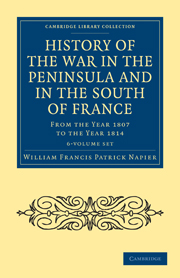 Again, the BBC boldly goes where CLC has gone before – the subject of today’s ‘Great Lives’ on BBC Radio 4 was William Robinson, the gardener and writer. The format of the programme brings together an ‘nominator’ and an ‘expert’ on the chosen life: in this case the nominator was the famous, and famously enthusiastic, plantswoman Carol Klein, and the expert was Robinson’s biographer, Richard Bisgrove.
Again, the BBC boldly goes where CLC has gone before – the subject of today’s ‘Great Lives’ on BBC Radio 4 was William Robinson, the gardener and writer. The format of the programme brings together an ‘nominator’ and an ‘expert’ on the chosen life: in this case the nominator was the famous, and famously enthusiastic, plantswoman Carol Klein, and the expert was Robinson’s biographer, Richard Bisgrove.
Now I can’t claim that I actually know Carol Klein, but I did nearly crash into her coming round the corner of a densely planted stand at the Chelsea Flower Show a few years ago. I said hello – the way you do when you know you recognise someone from somewhere – and she beamed and said hello back. The penny dropped some seconds later for me, but I like to think that she remembers the (non-)incident just as fondly as I do.
William Robinson is sometimes called ‘the father of gardening’ – but then so are quite a lot of other people: in Britain, you could argue for John Gerard, the Tradescants, John Evelyn, William Kent, ‘Capability’ Brown, Humphry Repton, John Loudon (these two coming soon to CLC!), the Veitches, or Gertrude Jekyll (‘mother’ in her case, obviously). And he wasn’t a great innovator: but what he was good at was communicating his (and other people’s) ideas to the reading public in an authoritative, if not dogmatic manner. He was above all an arbiter of taste, and ferocious about what he considered to be bad taste – especially the formal, strictly regimented ‘carpet’ bedding of the high Victorian period, which, as well as requiring massive resources of labour to achieve, was highly wasteful of plants (the whole lot being dug up and composted at the end of the season), and was usually colourful (to put it kindly) or horribly garish (to put it otherwise).
Robinson was a pioneer of the natural look, and was a plant ecologist at the time when the term ‘ecology’ was first coming into use after its coinage by Ernst Haeckel. Widely travelled, he knew what plants would flourish in what conditions, and encouraged the use of hardy plants, including ones which at the time were thought NOT to be hardy in Britain, to create permanent and natural-looking plantings in which the background foliage – the endless varieties of green – was at least as important as the flowers. One or two of his suggestions would be thought odd today: generations yet unborn will probably be grinding their teeth at his promotion of the notorious Japanese knotweed (which he said might spread a bit but could be controlled by trench); and he thought that for a tall shrubby bush giving height and a jungly feel to a border, a Cannabis sativa was just what you needed…
Robinson was born in Ireland in 1838. (He died in 1935 – what a century to have lived through!) He was reticent about his origins, though he began as a ‘garden-boy’, and must at some point have come to the attention of the curator of the botanic gardens at Glasnevin Park, Dublin, from whom he obtained a reference which helped him to gain a post at the Regent’s Park gardens in London in 1862. After four years, he resigned to travel and write on gardens, and his books and journalism succeeded to the extent that he could buy himself a house in Kensington, travel across the United States by train, and finance a weekly, illustrated periodical, The Garden, which was later followed by several other journals and books.
In 1885 Robinson bought Gravetye Manor in Sussex, and developed the gardens, which became famous as an exemplar of the natural, unregimented style which he championed. (The house is now a hotel, and the gardens, which had fallen into decay after the Second World War, are being restored.) He was paralysed for the last thirty years of his life, but went out in his wheelchair with bags of bulbs and seeds, throwing them on the ground where he wanted them to be planted.
‘Is he in or out of fashion at the moment?’ asked Matthew Parris, the programme’s presenter. Very much in, came the response – and one of the ways you can tell, apparently, is that Cambridge University Press has reissued The English Flower Garden (!!!!!!!!). Indeed we have, as well as The Wild Garden, Or, Our Groves and Shrubberies Made Beautiful, and The Subtropical Garden, Or, Beauty of Form in the Flower Garden – watch this space for more!
Caroline



Pingback: The Picturesque Landscape | Cambridge Library Collection Blog
Pingback: Paris Parks and Assyriology for Beginners | Cambridge Library Collection Blog
Pingback: The Garden Museum | Professor Hedgehog's Journal